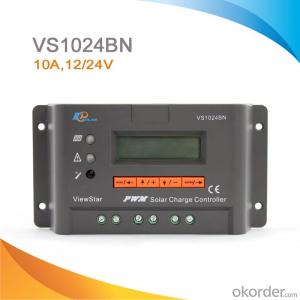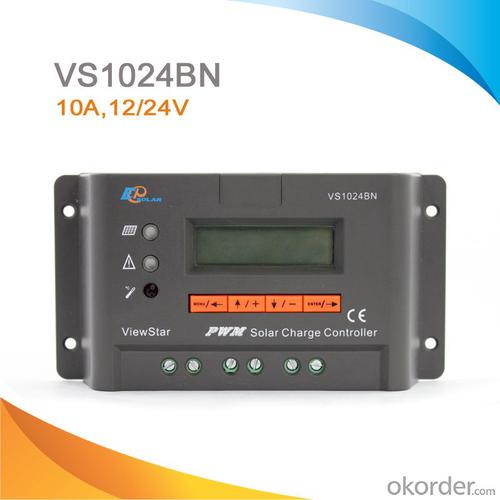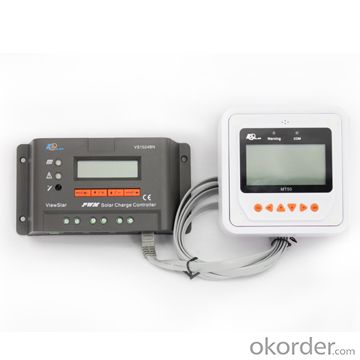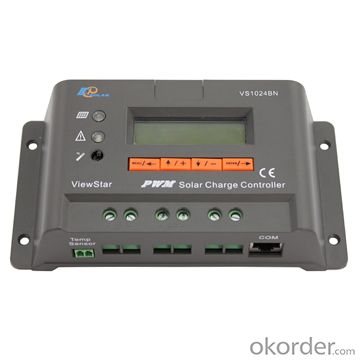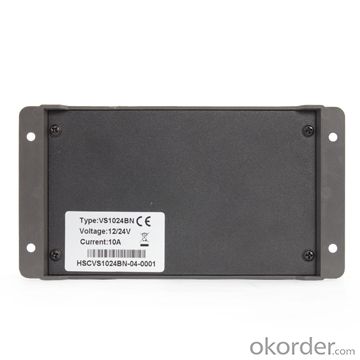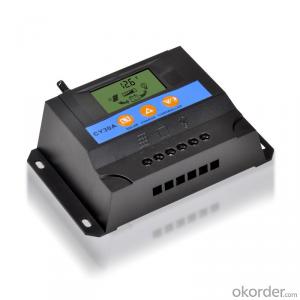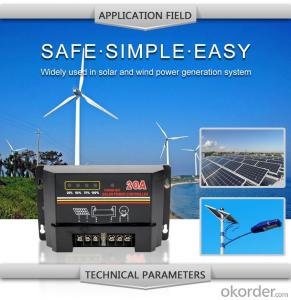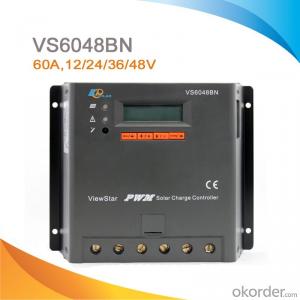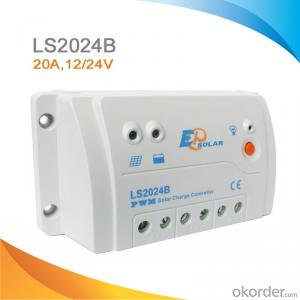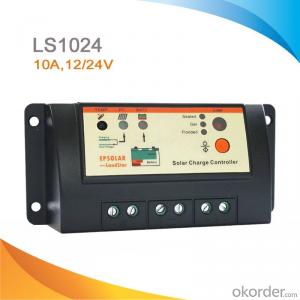60 Amp Intelligent PWM Solar Charge Controller for Solar Street Light, 12V/24V, VS1024BN
- Loading Port:
- China main port
- Payment Terms:
- TT or LC
- Min Order Qty:
- -
- Supply Capability:
- -
OKorder Service Pledge
OKorder Financial Service
You Might Also Like
Features:
·Excellent EMC design
·32 bit MCU with high speed
·High efficient Series PWM charging
·Four battery type options: Sealed, Gel, Flooded, and USER
·Intelligent lighting and timer control for solar lighting system
·12 bit A/D high-precision sampling to ensure accuracy
·Use MOSFET as electronic switch
·Full control parameters setting and modification, diversified load control mode
·Humanized design of browser interface, undertake every operating conveniently
·Temperature compensation
·Adopt graphics dot-matrix LCD screen and HMI (human-machine interface) with 4 buttons,integrated menu displaying and operation
·Energy statistics function
·RS485 ports with MODBUS communication protocol
·Optional PC monitoring software and remote meter for real-time monitoring and battery management parameter setting
·Field upgradable firmware
Specification:
Model | VS1024BN | VS2024BN | VS3024BN | VS4524BN | VS6024BN |
Nominal system voltage | 12V/24V auto work | ||||
Rated battery current | 10A | 20A | 30A | 45A | 60A |
Rated load current | 10A | 20A | 30A | 45A | 60A |
Max. battery voltage | 32V | ||||
Equalize charging voltage | Sealed: 14.6V, Flooded: 14.8V, User-defined: 9~17V | ||||
Boost charging voltage | Gel: 14.2V, Sealed: 14.6V, Flooded: 14.8V, User-defined: 9~17V | ||||
Float charging voltage | Gel /Sealed /Flooded: 13.8V, User-defined: 9~17V | ||||
Low voltage reconnect voltage | Gel /Sealed /Flooded: 12.6V, User-defined: 9~17V | ||||
Low voltage disconnect voltage | Gel /Sealed /Flooded: 11.1V, User-defined: 9~17V | ||||
Self-consumption | ≤15mA(12V); ≤10mA(24V); ≤9mA(36V); ≤8mA(48V) | ||||
Grounding | Common negative | ||||
Temp. compensation | -3mV/°C/2V | ||||
Relative humidity | 10%~90% Non-condensation | ||||
Communication | RS485 / RJ45 interface | ||||
LCD temperature | -20°C ~ +70°C | ||||
Working temperature | -25°C ~ +55°C | ||||
Humidity | ≤95% N.C. | ||||
Enclosure | IP30 | ||||
Overall dimension | 162x85x40mm | 162x100x50mm | 200x103x58mm | 201x109x59mm | 205x129x67mm |
Terminals | 4mm2 | 10mm2 | 16mm2 | 35mm2 | 35mm2 |
Net weight | 0.2kg | 0.4kg | 0.7kg | 0.9kg | 1.3kg |
Warrenty
provides a 1~3 year limited warranty (“Warranty”) against defects in materials and workmanship for its Uninterruptible power supply,
Power inverter/chargers, Solar charge controllers, Battery Products (“Product”).
The term of this Warranty begins on the Product(s) initial purchase date, or the date of receipt of the Product(s) by the end user,
whichever is later. This must be indicated on the invoice, bill of sale, and/or warranty registration card submitted to MUST-Solar.
This Warranty applies to the original MUST-Solar Product purchaser, and is transferable only if the Product remains installed in the original use location.
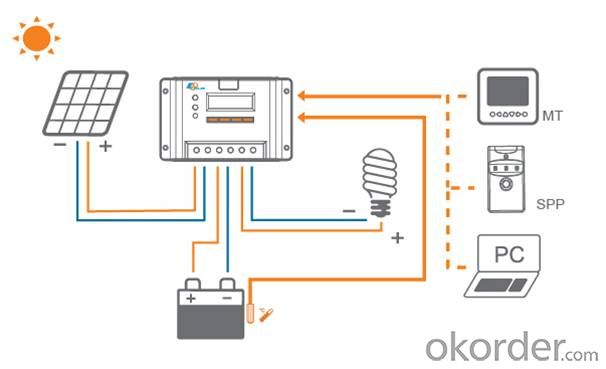
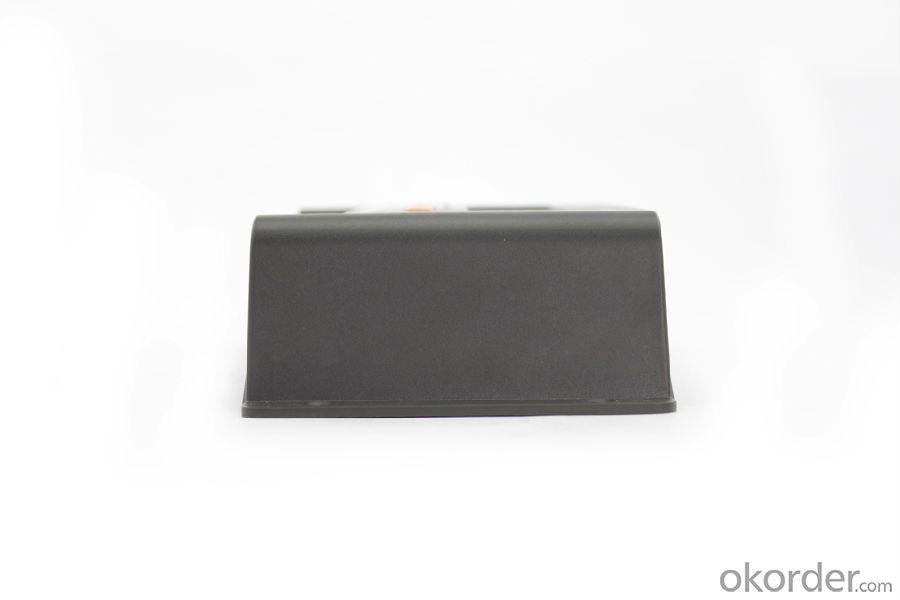

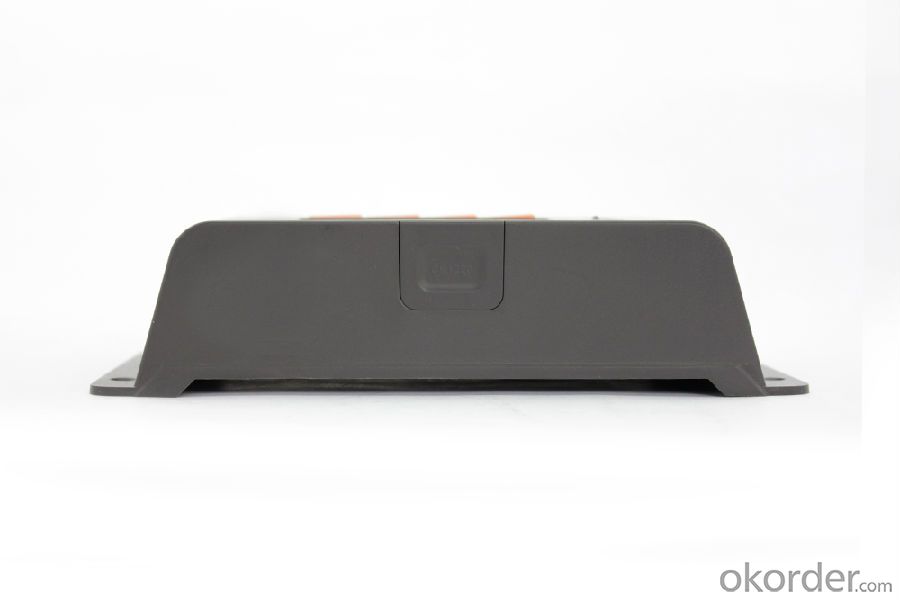
FAQ:
Q1. What is the voltage?
A1. Our 45/60A solar charge controller is 12/24/36/48V auto work.
Q2. What is the difference between MPPT&PWM?
A2. MPPT has higher efficiency, it can track the max power point and won't waste energy.
Q3. What is the efficiency of the MPPT controller?
A3. MPPT>99%, peak conversion efficiency>98%.
Q4. What is the waranty of product?
A4. 12 months.
Q5. What protection does your MPPT controller have?
A5. PV array short circuit, PV reverse polarity, Battery reverse polarity, Over charging, Output short circuit.
- Q: Can a solar controller be used with solar-powered outdoor signage?
- Yes, a solar controller can be used with solar-powered outdoor signage. A solar controller helps regulate the charging and discharging of batteries in a solar power system. It ensures that the batteries are charged efficiently using the solar panels and prevents overcharging or undercharging. Therefore, using a solar controller is crucial for maintaining the proper functioning and longevity of solar-powered outdoor signage.
- Q: Can a solar controller be used with multiple solar panels?
- Yes, a solar controller can be used with multiple solar panels. The solar controller is responsible for regulating the flow of electricity between the solar panels and the battery or grid, regardless of the number of panels connected to it. It ensures that the panels are functioning optimally and prevents overcharging or damage to the system.
- Q: Can a solar controller be used with a solar-powered irrigation system?
- Yes, a solar controller can be used with a solar-powered irrigation system. The solar controller helps regulate the charging and discharging of the batteries in the solar-powered system, ensuring efficient use of solar energy to power the irrigation system.
- Q: What is the maximum number of solar panels a solar controller can handle?
- The maximum number of solar panels a solar controller can handle depends on the specific model and its specifications. Each solar controller has a maximum input voltage and current rating, which determines the number of solar panels it can effectively manage. It is crucial to review the product's documentation or consult with the manufacturer to determine the maximum capacity of solar panels that a particular solar controller can handle.
- Q: Can a solar controller be used with a solar-powered irrigation pump?
- Yes, a solar controller can be used with a solar-powered irrigation pump. The solar controller helps regulate and optimize the energy from the solar panels, ensuring proper power management and efficient operation of the pump.
- Q: Can a PWM solar controller be used with an MPPT solar panel?
- No, a PWM (Pulse Width Modulation) solar controller cannot be used with an MPPT (Maximum Power Point Tracking) solar panel. MPPT solar panels require an MPPT controller to optimize the power output and efficiency.
- Q: How does a solar controller protect against lightning strikes?
- A solar controller protects against lightning strikes by diverting the high voltage surge caused by a lightning strike to the ground, preventing it from damaging the solar system components.
- Q: What is the maximum charging efficiency for a solar controller?
- The maximum charging efficiency for a solar controller is typically around 98%.
- Q: Can a solar controller be used with a generator or grid power as a backup?
- A solar controller has the capability to be utilized alongside a generator or grid power as a backup. Its purpose is to regulate the flow of electricity from the solar panels to either the batteries or the power grid. When surplus electricity is generated by the solar panels, the solar controller can redirect that energy to charge the batteries or return it to the grid. In situations where the solar panels are not generating sufficient electricity, such as during cloudy days or at night, a generator or grid power can serve as an alternative source of electricity. The solar controller can seamlessly transition between the solar panels and the backup power source, guaranteeing a continuous supply of electricity to the system. This feature enables greater adaptability and dependability in powering devices or appliances within off-grid or grid-tied solar systems.
- Q: How does a solar controller prevent damage from over-discharging of batteries?
- A solar controller prevents damage from over-discharging of batteries by constantly monitoring the battery voltage and disconnecting the load when it drops below a certain threshold. This prevents the batteries from being drained beyond their safe capacity, which can lead to irreversible damage and reduced lifespan.
Send your message to us
60 Amp Intelligent PWM Solar Charge Controller for Solar Street Light, 12V/24V, VS1024BN
- Loading Port:
- China main port
- Payment Terms:
- TT or LC
- Min Order Qty:
- -
- Supply Capability:
- -
OKorder Service Pledge
OKorder Financial Service
Similar products
Hot products
Hot Searches
Related keywords
